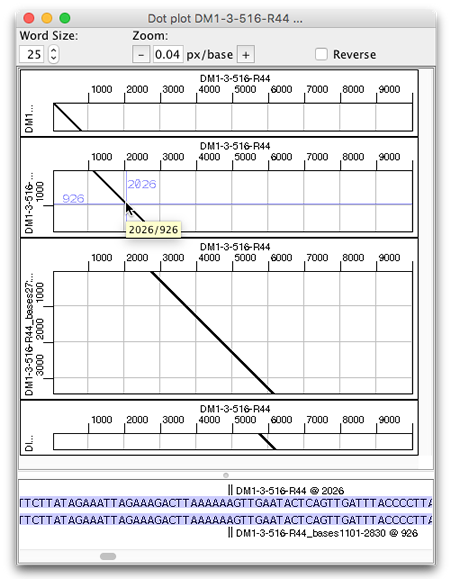

- CODONCODE ALIGNER KEYGEN CRACKED
- CODONCODE ALIGNER KEYGEN FULL VERSION
- CODONCODE ALIGNER KEYGEN MAC OS X
^ Andersson LS, Juras R, Ramsey DT, Eason-Butler J, Ewart S, Cothran G, Lindgren G (2008)."Direct detection of methylation in genomic DNA". ^ Bart A, van Passel MWJ, van Amsterdam K, van der Ende A (2005)."Microeukaryote Community Patterns along an O2/H2S Gradient in a Supersulfidic Anoxic Fjord (Framvaren, Norway)'Ć". ^ Behnke A, Bunge J, Barger K, Breiner H, Alla V, Stoeck T (2006)."MHC class I characterization of Indonesian cynomolgus macaques".


^ Pendley CJ, Becker EA, Karl JA, Blasky AJ, Wiseman RW, Hughes AL, O'Connor SL, O'Connor DH (2008)."Frequent Intrapatient Recombination between Human Immunodeficiency Virus Type 1 R5 and X4 Envelopes: Implications for Coreceptor Switch'ñø". ^ Mild M, Esbjörnsson J, Fenyö EM, Medstrand P (2007)."Severe anaemia is not associated with HIV-1 env gene characteristics in Malawian children". ^ Calis JC, Rotteveel HP, van der Kuyl AC, Zorgdrager F, Kachala D, van Hensbroek MB, Cornelissen M (2008)."Residual Human Immunodeficiency Virus Type 1 Viremia in Some Patients on Antiretroviral Therapy Is Dominated by a Small Number of Invariant Clones Rarely Found in Circulating CD4+ T Cells'Ć". ^ Bailey JR, Sedaghat AR, Kieffer T, Brennan T, Lee PK, Wind-Rotolo M, Haggerty CM, Kamireddi AR, Liu Y, Lee J, Persaud D, Gallant JE, Cofrancesco J, Quinn TC, Wilke CO, Ray SC, Siliciano JD, Nettles RE, Siliciano RF (2006).Citations cover a wide variety of biomedical research areas, including HIV research, biogeography and environmental biology, DNA methylation studies, genetic diseases, clinical microbiology, and evolution research and phylogenetics. In April 2009, CodonCode Aligner had been cited in more than 400 scientific publications.
CODONCODE ALIGNER KEYGEN FULL VERSION
The first beta version of CodonCode Aligner was released in April 2003, followed by the first full version in June 2003.
CODONCODE ALIGNER KEYGEN MAC OS X
Commercial free for limited use (trace viewing & editing)ĬodonCode Aligner is a commercial application for DNA sequence assembly, sequence alignment, and editing on Mac OS X and Windows.įeatures include chromatogram editing, end clipping, and vector trimming, sequence assembly and contig editing, aligning cDNA against genomic templates, sequence alignment and editing, alignment of contigs to each other with ClustalW, MUSCLE, or built-in algorithms, mutation detection, including detection of heterozygous single-nucleotide polymorphism, analysis of heterozygous insertions and deletions, start online BLAST searches, restriction analysis (find and view restriction cut sites), trace sharpening, and support for Phred, Phrap, ClustalW, and MUSCLE. Finally, the coverage of the genome was utilized to identify the variant density across the genome and the coverage distribution was visualized with Gistic2 78. Regions were summarized with copy number alteration calling (PICR) 76 in order to mark the potential somatic copy number alterations in cancer 77. In order to identify putative copy number variations (CNVs), the read depth ratio was calculated by GATK and the normalized ratios of all samples. Single nucleotide variants (SNVs) were identified with GATK HaplotypeCaller 75 which is able to handle chromosome-level assembly. Sequencing data were aligned with the human genome build 19 using the Burrows-Wheeler Aligner (BWA) 1.5.9 () to produce bam files, which were then sorted and indexed using Samtools 1.3 () 74. This hierarchical approach to binning, developed at JCVI, is designed for the analysis of large sequence dataset and is already in use in over 150 laboratories, including those at Ceniaf. This hierarchical approach to binning was developed in an effort to identify known species and to collect the microbial diversity into groups that represent potential new species. Craig Venter Institute (JCVI) to assemble the metagenomic data into microbial phylotypes. Based on assumption one, we used a hierarchy-based method developed at J. Binning refers to the process of subdividing metagenomic data into replicates, or bins, based on the microbial phylogenetic similarity of the sequences. To make the first assumption, we used binning.
CODONCODE ALIGNER KEYGEN CRACKED
Codoncode Aligner Sequence Assembler Cracked


 0 kommentar(er)
0 kommentar(er)
